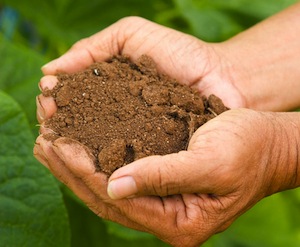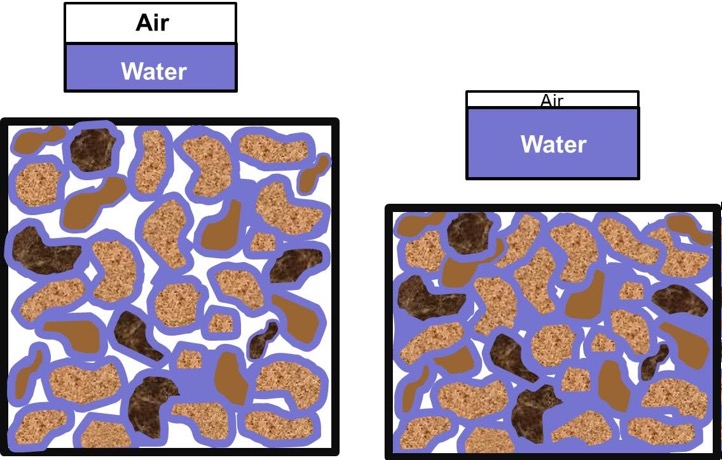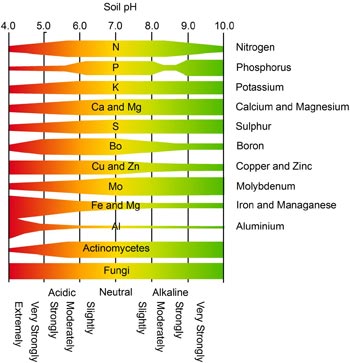Make Your Soil Work For Your Plants
By Tony Makara, Fairfax Master Gardener
 As young kids, how many of us spent many a summer day playing in dirt? I can’t recollect the precise activities this entailed except that it was definitely “hands on” and probably involved digging with play tools or maybe using a Tonka Truck or two. All that play time didn’t make most of us soil scientists, but we sure had fun. As gardeners, whatever our level, we still play in dirt, but now it’s to grow great and productive plants, whether they be vegetables, ornamentals, shrubbery or even turfgrass.
As young kids, how many of us spent many a summer day playing in dirt? I can’t recollect the precise activities this entailed except that it was definitely “hands on” and probably involved digging with play tools or maybe using a Tonka Truck or two. All that play time didn’t make most of us soil scientists, but we sure had fun. As gardeners, whatever our level, we still play in dirt, but now it’s to grow great and productive plants, whether they be vegetables, ornamentals, shrubbery or even turfgrass.
The dirt in our backyards lays the foundation for nutritious and strong plants. Literally. We strive for soil that holds moisture, but drains well, is loose and has air for roots to establish themselves. It also has plenty of minerals essential for vigorous plant growth. A good gardener values the dirt as much as what is growing in it, since the healthier the soil, the better our plants will grow. Few of us begin our first garden with ideal soil, so we learn what measures to take and what practices to avoid. The more we understand what we need from our soil, the better we can remediate problems such as heavy clay, or plant-choking compaction.

Effects of Compaction on Pore Space
Clay soil is sometimes thought of as the bane of gardening efforts. It consists of tiny particles so close that they do not allow for air and water circulation needed by the plant’s roots. We all know its characteristics. When dry, it is super-hard, and when wet, it is very sticky and adheres to our shoes. Here are some other facts: Clay’s soil particle shape is flat, or plate-like, which is why the particles are good at stacking on top of one other and creating a very “tight” soil. Clay is very good at preventing water from infiltrating into the soil, which leads to runoff and erosion problems. it is also very good at holding water. Clayey soils will stay wet longer than other soil types.
Although clay soil is dense and difficult to dig or till, we can convert it into ideal garden soil by working 2 to 3 inches of organic matter into at least the top 6 to 7 inches. This can be rototilled, forked or dug into the soil. This should be done either in the fall, after harvesting, or in the spring before planting. Adding organic matter helps separate the clay particles, making heavy soils crumbly, with the benefit of improving water and soil retention. Ideal organic matter includes compost, or a natural mulch comprised of decomposed leaves, grass, small twigs or even rotted manures. Such additive products are available from full-service garden centers or we can make our own. As the clay soil structure is loosened, the roots of a healthy growing plant benefit from the air in the soil, and this in turn provides the plant the oxygen it needs for its cellular growth. Should we mix sand alone into clay soil to loosen it up? Not unless we want concrete-hard soil. Adding and digging in compost over time won’t eliminate clay, but it will be broken up to enable the roots to work as they are meant.
Heavy clay and soil compaction sometimes go hand in glove, but even an ideal soil composition can suffer from compaction, which results from repeated pressure on the soil. The problem starts when the soil particles in the top few inches are compressed from traffic and overuse, once more resulting in a condition that impedes the flow of air, nutrients and water to the roots. As with clay soils, compacted soil has a reduced rate of both water infiltration and drainage, because it lacks the porous characteristics to move water downward more effectively through the soil. And as with heavy clay soil, compacted soil also means roots must exert greater force to penetrate the compacted layer. In a garden, the best way to minimize compaction is to avoid walking on the soil. For vegetable gardens, raised beds and right-sized containers are ideal. But what about lawns? Compaction occurs simply by our season-long foot pressure when mowing. Lawn compaction can be addressed by core aeration, which opens small holes in the soil to loosen it up. A hollow tine core aerator pulls little plugs from the soil, allowing for the roots to expand and take advantage of the loosened soil. Avoid solid-tine or spiking devices that may actually further compact the soil. When core-aerating, that’s the time to apply about a quarter to a half inch of the organic matter, such as the compost matter used in the garden, as a top dressing. As in the vegetable garden, this increases organic content and likewise improves infiltration and water percolation. It will also help decompose any thatch buildup.
Fixing soil compaction and clay content address the soil structure, but along with that it is always recommended that garden soil be tested to learn the soil’s pH. For the gardener, having the right pH enables the plant to absorb nutrients from the soil. The pH tells us the measure of the soil’s acidity or alkalinity. (The term pH stands for Potential / Power of Hydrogen, focused on concentrations of positive hydrogen ions (H+) as opposed to negative hydroxide ions (OH-).

Width of bands = availability of nutrients to plants
The pH scale runs from 1.0 to 14.0, with 7.0 being neutral. Readings below 7.0 indicate the degree of soil acidity based on the number of hydrogen ions, while above 7.0 indicates alkalinity. A notable point about pH is that the scale is logarithmic in multiples of 10. A soil with a pH reading of 6.0 is 10 times as acidic than 7.0, and a soil with a pH of 5.0 is 100 times more acidic than 7.0. And, a reading of 4.0 is 1,000 times more acidic. (Yes, there are some readings pretty close to that.)
The abbreviated pH chart shows the various nutrients in the soil such as phosphorus, potassium, calcium, manganese and iron. The same amount of the nutrient is in the soil regardless of the width of the band on the chart, but where the bands are thick, the element in that band is water soluble. This means that it can be taken up by the plant through its roots. Where the bands are narrow, the elements are in a non-soluble status that blocks their uptake by the plant’s roots. Many of our plants do quite well when the soil pH ranges from 5.5 to 6.8, or slightly/moderately acid. But it is always best to know the pH that is ideal for the plant that is to be grown, so the pH can be properly adjusted. It’s also a best practice to group plants with the right pH needs. For instance, blueberries or azaleas thrive at a much lower pH than other, less acid-tolerable plants. And, it is not uncommon for the soil pH to differ significantly between a front yard and a back yard of a single residence. Oftentimes, this is the result of landfill displacement during home construction.
There are several ways to go about getting soil tested. There are commercial kits that can be used for this purpose, or basic soil meters that provide an instant indication. Most full-service garden centers carry such products. Some private companies will also do this for a fee. Another option is to have it tested at the Virginia Tech Soil Lab, as part of the Virginia Cooperative Extension. Ready sources for free soil sample mailing kits are the Fairfax County Public Libraries and from the Virginia Cooperative Extension. Although libraries and county offices are still closed as of this writing, these same kits are available at several prominent full-service commercial garden centers throughout Fairfax County. A single soil test from Virginia Tech costs $10, plus postage.
Most of our residential soils in Fairfax County trend toward being slightly acidic, but there will be many instances where the soil shows as too acidic for what we want to grow. Soil acidity is corrected through the application of lime. The soil test results from Virginia Tech will indicate how much lime should be applied, if needed, as measured in pounds/1,000 square feet. So, no matter where the pH reading is indicated, the key value of a soil test result is that it will tell the precise amount of lime needed for correction.
So, as we more and more come to appreciate the role our soil plays in successful gardening, “playing in dirt” becomes much more meaningful and leads to rewarding garden successes. After all, think of just a few of the rewards that healthy soil brings: less erosion, better water filtration, oxygen, enhanced microbial activity, mineral availability — all supporting thriving root growth that produces enhanced nutritional uptake for the plant. While we enjoy the bounty and beauty of our gardens, let’s give due credit for the great job that a well-tuned, healthy soil does throughout the gardening life cycle.
References
• Should You Aerate Your Lawn?, Tom Kalb, North Dakota State University
• Low Maintenance Lawn Care, Home Grounds Fact Sheet, Cornell University Cooperative Extension,
Nassau County
• Home Lawn Maintenance, ANR 239, Alabama Cooperative Extension System, Alabama A&M and
Auburn Universities
• What To Do About Compacted Soil, Gretchen Voyle and Hal Hudson, Michigan State University
Extension
• Soil Health, Dana Mulligan, VCE Horticulture Intern, Fairfax Gardening
• Phenomenal pH Phacts, Ray Novitske, Fairfax Gardening
• Make Soil Microbes Your Friend, Marsha Goldberg, Fairfax Gardening
• Understanding Your Virginia Soil Test Report, Gil Medeiros, Fairfax Gardening